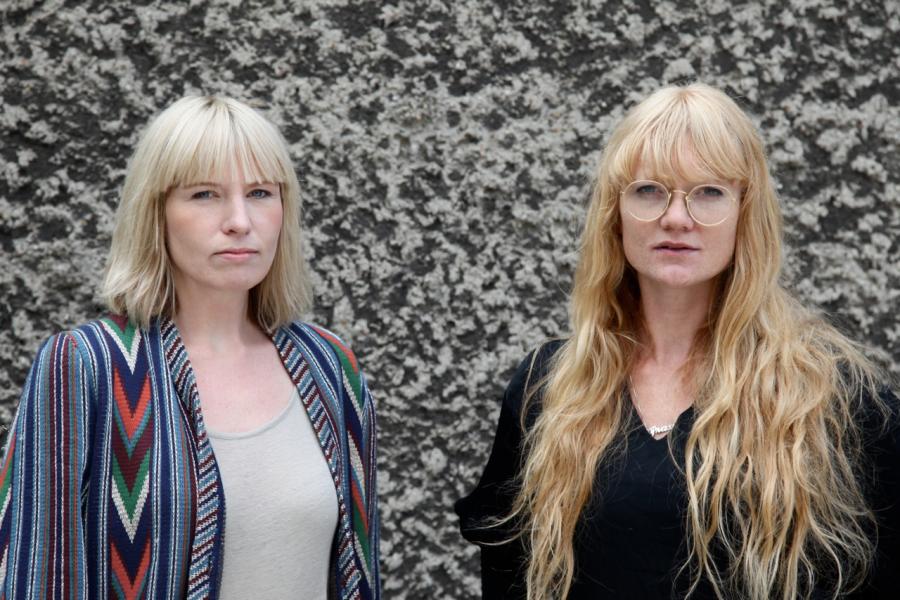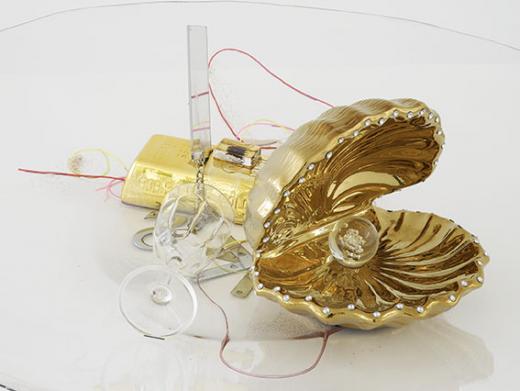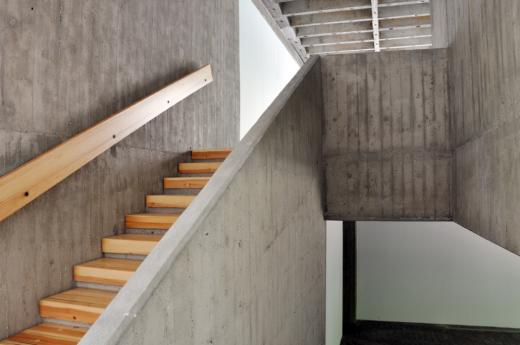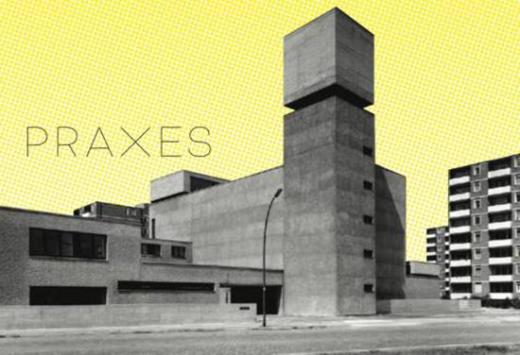Have You Met... Praxes
Have You Met... Praxes

In a two-floor 200m2 of the former church complex St.Agnes an exciting new art space opens its doors on 31st of August. PRAXES is a not-for-profit venue for international contemporary art and research founded and directed by Rhea Dall and Kristine Siegel.
Every half-year PRAXES will focus in parallel on two unassociated artistic practices. Displays of older works, collaborations, performances, unfinished business, failed ideas, archives and other material will allow for a slow and thorough exploration of recurring themes, materials and methods as well as contradictions and productive disruptions across a body of work. Simultaneously, PRAXES will present short term explorations: Parlors – live events such as performances, discussions, film screenings, talks and workshops, as well as Papers – an online edited publication of related materials accumulated over each cycle.
Praxes will open its doors on Saturday 31st August for the first time. Bpigs met with the directors last week.
What is the story behind PRAXES? How did you two meet and decide to make it happen?
Rhea: We first met at the University of Copenhagen and then re-met in 2006 in New York where Kristine at that point was at MoMA and I at Guggenheim. We hung out quite a lot and decided to do something together at some point. But then I left for Berlin. I started working for the Berlin Biennial, for the 5th and 6th, and in between for the Venice Biennial. We kept in touch, but with me in Berlin and Kristine...
Kristine: I stayed in New York. After MoMA, I worked for Dennis Oppenheim and then the ISCP, the residency program. When I decided it was time to move to Berlin, the first thing I did was call up Rhea and say "this is it, we're starting something." But she had actually just moved to Copenhagen.
Rhea: Yes, we just about missed each other since I had just got a job as the curator at Kunsthal Charlottenborg in Copenhagen.
Kristine: After working loosely on the layout together, eventually Rhea moved back and we've been working on it for about a year with a sort of intensity that I would call a full time (24h !) job. We spent the whole winter biking around Berlin and looking at different spaces. It was a really good way to get back together as a team but also just to see a lot of Berlin. And I guess the concept took shape over this long search. When the location in Alexandrinenstrasse came along we instantly decided to take it. The space just has such an amazing presence and history in itself, being a community house, a place for "congregating" and all.
How important was the location of the space?
Rhea: Being rather centrally located is also very important. Since our concept is to show the artist consistently for half a year, and if we want people to come here repeatedly, we can't be far off the beaten track. One of the great myths to add to that is that this is the actual geographical center of Berlin. There's an official bronze plaque layed down by the City of Berlin just a few meters up the street.
Kristine: To add to that it seemed sensible that the space is distributed over two floors, so that we can actually show two artists in two separate rooms with very different qualities.
Where would you locate this space in the Berlin art scene map? Do you aim to expand it with something completely new?
Kristine: We spend a lot of time talking about what's already in Berlin – the initial impression when I moved here was that there are already so many projects spaces and galleries. As we got further into this investigation it became clear that most of the spaces in Berlin are fairly small, really ambitious programs but in 25 m2 You don't see many mid-size spaces that are distinctly different from commercial galleries and ad hoc 25m2 investigation spaces. When we put together the concept, we found a lot of inspiration in academic sources and alternative schools, projects expanded in time, ideas of different types of interdisciplinary research and of residency programs. Is it completely new - I would say it's an original mixtape.
How and why did you come up with this particular format?
Rhea: Most art spaces we know work with a new exhibition every month, or every second or third. We wanted to test out a different format for showing artistic work, and one that takes time. I guess for curators as well as artists, it's terribly frustrating that you use such an effort to build an exhibition – to enter the conversation, increasingly compile knowledge – and then often times when the show is up, the collaboration finishes, it's onwards, new people, organizations and so on. So we decided to focus and re-focus repeatedly on just two artists for a longer period of time. There are so many possibilites to explore here, with very different qualities.
Kristine: The central question is, how do you talk about an artistic practice today, how can you articulate it both as texts, as exhibition, as event, as collective...
What type of artists will PRAXES show?
Kristine: It's not so much about the type of media or age, obviously we're not really about the new and fashionable, we don't have the kind of pressure that galleries often have. It's a particular type of attitude in an artist that we're looking for. Somebody who's interested in or thrives on a kind of collaborative process, at taking a critical look at the entire practice, the curatorial, the research behind.
Rhea: I guess it is also thinking of the conversation (in it's wide-ranging ways) as a generative for a production.

Jutta Koether, Luise (detail), 2013, Courtesy of Campoli Presti.
How is the online material ("Papers") adding to the overall project?
Kristine: The things that will go online will be very different from what's happening here. We really try to take the generosity of the online presence seriously, not as an add-on but as an accumulative presence that has a life of its own. Everything springs from the exhibitions but the body that has developed around it can act in different ways. It should be an ongoing dialogue and about creating a lasting introduction to a body of work and thinking, also after the exhibitions are gone.
Rhea: Basically, it boils down to the generosity of the library in a way. A library not as something that needs to cover everything , but actually stems from the particular scope of an artistic practice, not just the ones on display, the public ones, the logical ones, but the real multitude of approaches and methods.
How extensive you want it to be, how open to other people's response?
Rhea: Constructing a space like this, we invite people to join, to come again. At the same time, we want to maintain high standards, of course. If you come here, you can be sure that what you see is thoroughly curated, what you read is edited material. But I hope that there will be people coming up to us with their own research material or responses; something like that would be exciting.
Kristine: It's quite important to emphasize that it is a library, not a pinboard. There is a difference between coming to the artist's studio and coming to this space, in terms of the exhibitions. It is a curator's carefully considered format, it's not just everything lying around. The Papers function in a similar way.

PRAXES Staircase, Photo by Elmar Vestner
How does the art scene respond to this new space?
Kristine: Everybody has been very neighborly. There has been no throwing of rotten tomatoes so far. There seems to be enough room in Berlin for everyone.
Rhea: I've been in Berlin quite some years. I believe most people that I have talked to agree that we're not stepping on anyone else's program or repeating something that's already here.
How will you finance your projects?
Rhea: First of all an important stepping stone is that both of us are currently research fellows employed by the University of Copenhagen, which means that we do not have to fundraise our own salaries, that's essential at this early stage.
Kristine: On top of that we are building up a network of private donors and corporate sponsorships along with support from different types of foundations the national funding bodies in the countries where the artists are coming from. I guess, ideally, we're not relying on one source of funding.
How do you see PRAXES developing in the future?
Rhea: We want PRAXES to continuously be a site of experimentation. From the next cycle when we bring two new artists into play, we will also bring two external curators into the discussion. We always want to a range of angles on the works and the practices on display. We're quite serious about keeping this as an experiment and we can only ensure that if we invite other people to participate, even on an organizational level.
Kristine: Every six months, we start over again!
Praxes Membership in Bpigs is funded by the Adopt a Project Space program.
